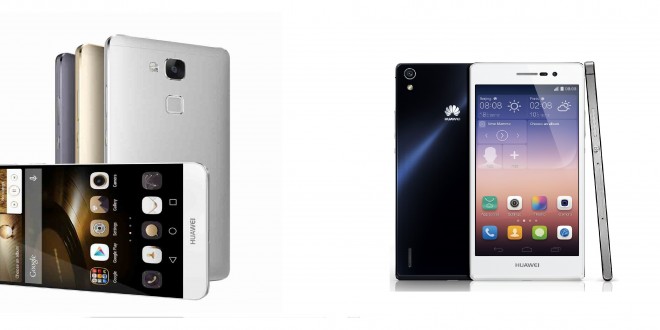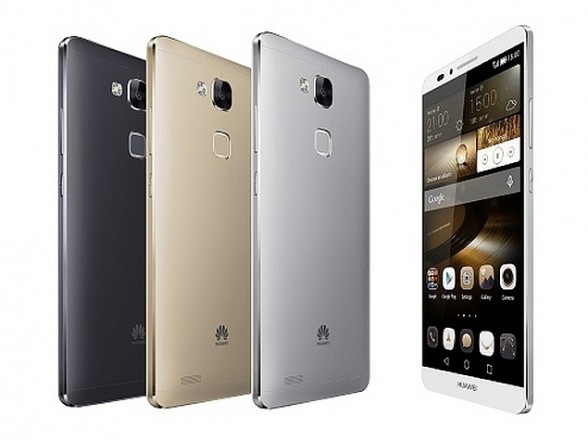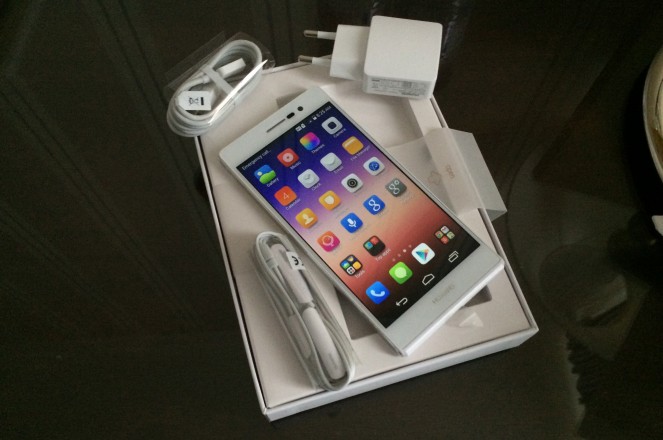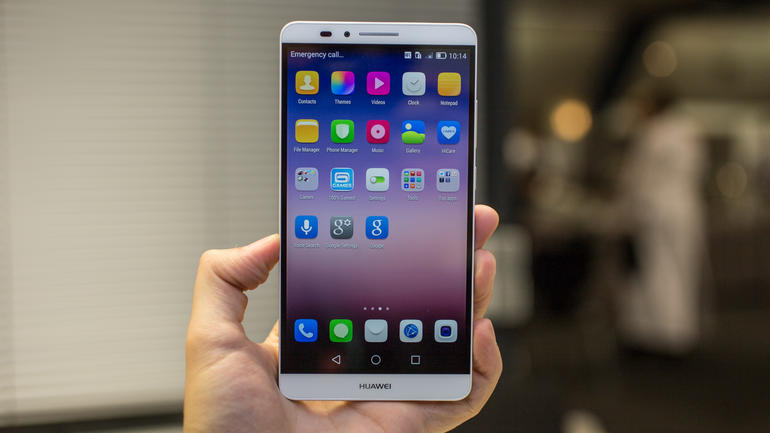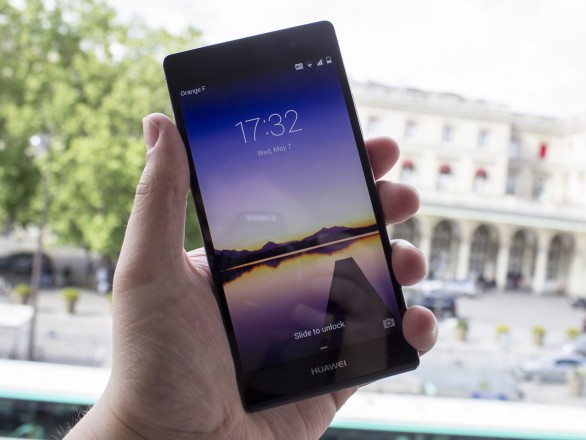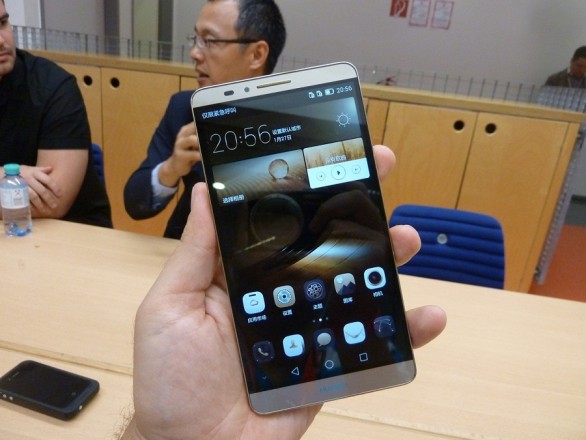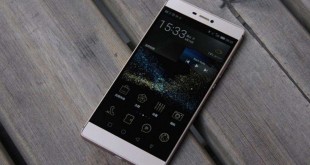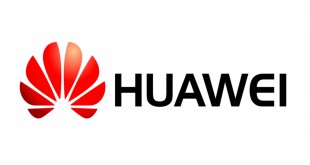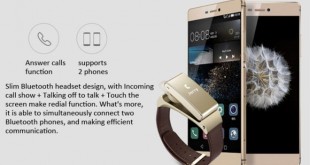Huawei is becoming one of the biggest smartphone manufacturers of the world and it has successfully taken on China’s biggest smartphone maker, Xiaomi, with the Ascend Mate 7 and even the older Ascend P7. The two flagships were launched in the same year, but they cater to different types of audiences: the former for those with an affinity for large display while the latter to those who love function in a smaller form factor. We are going to compare the specs and prices of the Ascend Mate 7 with those of the Ascend P7 to determine which has the better bang for buck, or value otherwise.
The Ascend Mate 7 is the more recent release from Huawei and it was announced in September 2014 to pretty positive reviews. Even though the design and UI of the Asvend Mate 7 borrows a few elements from Apple’s iPhone design, it keeps a unique design that seems appealing and refreshing. Not that it’s not the same rectangular block with rounded edges, though. The handset just feels a bit more innovative because of the thin bezels and sleek design. The Ascend P7, on the other hand, is reminiscent of Xperia devices without the glass finish all over. Both these handsets aim to be premium devices with affordable prices, but how do they size up next to each other? Let’s find out.
Prices
First off, we should get the obvious elephant out of the room and see how much we need to scrape up in order to buy either of these phones, unlocked. For the sake of an international take on things, we will use generic online retail prices to approximate how much a U.S. citizen would have to pay for each of these flagships. The Ascend Mate 7 price ranges from $500 to $850 depending on the configuration. For $500, you’ll get a 16 GB Ascend Mate 7, but you won’t be able to use it on CDMA networks in the U.S., which means no Boost, no Sprint and no Verizon. If you love the way the Ascend Mate 7 works but need it for a CDMA carrier, you’ll have to go for the more expensive $850 option. The price tag doesn’t just bring compatible bands with all U.S. carriers, but extra specs, a gold finish and double the ROM memory.
The Ascend P7 is the cheaper phone in this comparison, as its price starts at around $305 unlocked. The same basic carrier compatibility problems surface as with the Ascend Mate 7. You get a GSM unlocked smartphone with 16 GB of internal storage available for the shallow price, but if you want complete compatibility, you’re going to have to pay for it. Also pay attention if you want to order the Ascend P7 because some sellers list incorrect specs and RAM information. Always check the reviews before you order and check the model number so that you get the correct one, compatible with your network. If you are on a budget, the Ascend P7 should be your choice, as it comes with a lower price and decent specs.
Display and Hardware
The Ascend Mate 7 is the very definition of a phablet, and it is actually just a bit bigger than the Motorola Nexus 6. that doesn’t have to scare you though, as the slim metal phone comes with crazy-thin bezels putting the screen to body ratio at 77,6 %, which is awesome. You get a 6 inch IPS LCD display with a 1080*1920 resolution that adds up to a decent 368 ppi pixel density. The display on the device is bright and vivid, and you also get good viewing angles and outdoor visibility. The huge display is encased in a pretty thin and lightweight body that measures 157*81*7.9 mm, weighing about 185 grams. It certainly isn’t the lightest phone around, but the Ascend Mate 7 does look wonderful and with its metal chassis, it provides a premium experience.
The Ascend P7 is the smaller flagship and it comes with a similarly, if not better equipped display, You get a smaller 5 inch IPS LCD display with the same 1080*1920 resolution that amounts to 441 ppi pixel density. While you won’t necessarily discern between the resolution and overall display quality between the Ascend Mate 7 and Ascend P7, you might notice that the colors on the latter are brighter and crisper, and outdoor visibility is a bit better. Nonetheless, you do have to make due with a smaller display, which might be your choice from the beginning.
When it comes to hardware, the Ascend Mate 7 specs are superior to many other flagships out there, although they aren’t necessarily proof of better performance. You get a HiSilicon Kirin 925 octa core CPU with four cores at 1.8 GHz and another 4 at 1.3 GHz. The chipset is coupled with a Mali-T628 GPU abd 2 GB RAM for the 16 GB internal storage configuration and 3 GB RAM for the 32 GB internal storage variant. You also get a microSD card slot good for 128 GB extra storage, as well as dual SIM slot (one of which doubles as the card reader). It’s a neat setup and real life tests showed that performance on the Ascend Mate 7 is close to that of the Galaxy Note 4 or HTC One M8, which is pretty impressive.
The Ascend P7 isn’t as well endowed, but it’s definitely not an inferior release. The handset comes with a quad core HiSilicon Kirin 910T CPU, backed by a Mali-45MP4 GPU and 2 GB RAM. You only get 16 GB internal storage with this one, but you can expand it up to 64 GB with the use of a microSD card. Both these phones run on Android 4.4.2 KitKat, with Emotion UI on top. The only difference when it comes to software is that the Ascend Mate 7 comes with Emotion UI 3.0, while the Ascend P7 is as Emotion UI 2.3 out of the box. Performance on the P7 isn’t as smooth as on the Ascend Mate 7, but it does come close to what the Galaxy S5 or OnePlus One can manage.
Camera and Battery
The camera setup on the Ascend Mate 7 isn’t anything to write home about, but it does make for decent photoshoots. You get a 13 MP camera on the rear complete with an LED flash, HDR and autofocus. You also get a 5 MP sensor on the front, which is efficient for the occasional selfie. Camera samples from the Ascend Mate 7 show detail and quality that come near what the HTC One M8 can do, but the lack of optical image stabilization is a minus for video recording.
The Ascend P7 rivals the Ascend Mate 7 with the same 13 MP camera on the rear, but a more powerful 8 MP camera on the front. You still don’t get optical image stabilization, so the performance of both rear cameras is mostly the same. The front camera on the P7 is superior though, so if you’re a fan of selfies, the latter handset should cater to you more efficiently.
When it comes to battery, the Ascend Mate 7 is a behemoth, as it packs a massive 4100 mAh unit, which is no less than necessary to power all those pixels on the large display. You get a moderate two days of average battery life out of the handset, which is pretty neat in my mind. You probably won’t go over the two day mark with more than mixed use, but it’s pretty impressive nonetheless.
The Ascend P7 takes battery life seriously just as much, packing a 2500 mAh unit which is good for about a day and half if you don’t abuse your camera. With mixed use, you will definitely go over the one day mark, but don’t expect much more out of it with that high resolution. Battery life, as you can imagine, is pretty good with both these devices, but that depends very much on how you use and take care of your phone.
Features and conclusion
The Ascend Mate 7 is intended to be a serious competitor to the iPhone 6 Plus, as it comes with a fingerprint sensor on the back that promises to give you a better biometric experience than Apple’s offering even. While we couldn’t put the sensor to the test ourselves, user reviews say that it works flawlessly and is definitely faster than what you would find on the Samsung Galaxy S5. Otherwise, features on both the Ascend Mate 7 and Ascend P7 coincide: NFC, FM RAdio, Bluetooth 4.0, Wi-Fi a/b/g/n, 9 axis sensor, etc.
Overall, the Ascend Mate 7 would be my pick when it comes to bang for buck, as you get a huge battery, a fingerprint sensor, a massive display and a competent camera. For the $500 price, the Ascend Mate 7 definitely qualifies as a great buy. Nonetheless, if you don’t need the extra features, paying $300 for a device that can face anything you throw at it seems like the better deal. The Ascend P7 does come with a smaller screen, which wouldn’t be too neat if you’re into large displays, so I’m a bit divided on this one as I’m a phablet fan. Which would you pick?
 Load the Game Video Games, Reviews, Game News, Game Reviews & Game Video Trailers
Load the Game Video Games, Reviews, Game News, Game Reviews & Game Video Trailers
